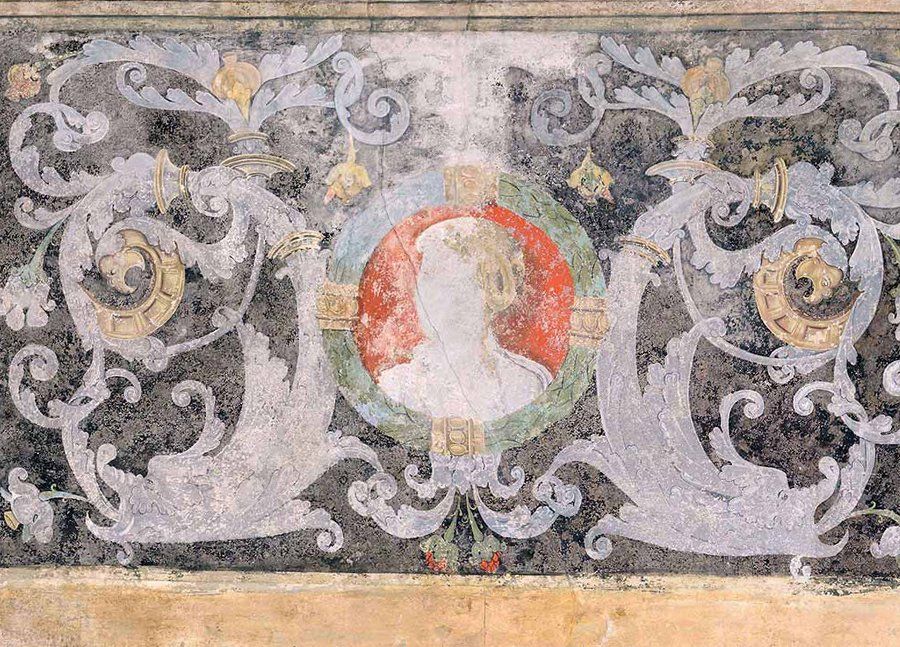Conservation
Within 15 years, the owner of Acton Court Sir Nicholas Poyntz was already attempting to memorialise the royal apartments he built for the prestigious visit of Henry VIII and Anne Boleyn in 1535; erecting buttresses to prevent the bowing, bulging and leaning walls from collapsing and the loss of a scene that may have represented for him, the culmination of his ambitions. Almost 500 years on, the heritage team at Acton Court are fortunately not grappling with such catastrophic matters. Whilst Sir Nicholas’s intervention was by necessity reactive, modern conservation principles promote a more preventative philosophy for the care of historic buildings; restraining the inevitable decay that effects all materials. This principle is steering our current approach to the care and management of Acton Court. Recent weather events, such as Storms Ciara and Dennis, remind us that changing weather patterns and increasingly extreme weather events are however particular challenges for ‘preventive conservation’.
When Sir Nicholas rebuilt Acton Court in the early to mid-16th century, the potential vulnerabilities of the rubble and loam wall elevations, to the weather, were mitigated by a sacrificial lime render and limewash covering, as they had been throughout the site for centuries before. In the last 150 years or so, this protective layer has all but worn away. During the rescue of Acton Court in the 1980s, from derelict farmhouse to 16th century courtier’s manor house, English Heritage agreed not to re-render the building and to consolidate the wall surfaces by pointing. Not all concurred with this step, amongst concerns that this would not adequately protect the fabric of the building.
So what challenges are we grappling with? Designated as a scheduled ancient monument and grade I listed building, we have a nationally important house and site with internationally significant wall paintings; requiring a protective environment to ensure their best condition. Fragile historic earth and lime plasters have already shown signs of damage, possibly due to periods of rapid drying out after persistent ingress of rain. Slowing-down these processes, allows historic buildings, and their typically inherent breathability, to deal more efficiently and effectively with what the weather throws at them.
So why not re-render the building? Re-rendering may well be one solution but first we need to understand how much of a problem we have and what the precise cause is. It is only then that we can explore the potential solutions, which could be as simple as introducing low-level heating to the interiors. With the assistance of our conservation architect Simon Cartlidge and our in-house craftsman Mike Cleaver, we are consequently in the process of monitoring and assessing the building and its interiors. Having installed datalogging equipment into several rooms, this monitoring includes the gathering of environmental data such as temperature, relative humidity and dew points so that we can understand the internal conditions, particularly whether surfaces and materials may be susceptible to condensation. As our valuable wall paintings have not been examined since they were conserved c.25 years ago, with the help of specialist paint conservators, we will also be recording the condition of our wall paintings and identifying any vulnerable or unstable areas, ultimately to provide a baseline to monitor future changes.
From time to time, we will provide updates on how this project is progressing. In the meantime, we will carry on with the immense privilege of protecting the significance of one of the best-preserved mid-16th century houses in the country.
Nicholas Ellis
Heritage Adviser at Acton Court







